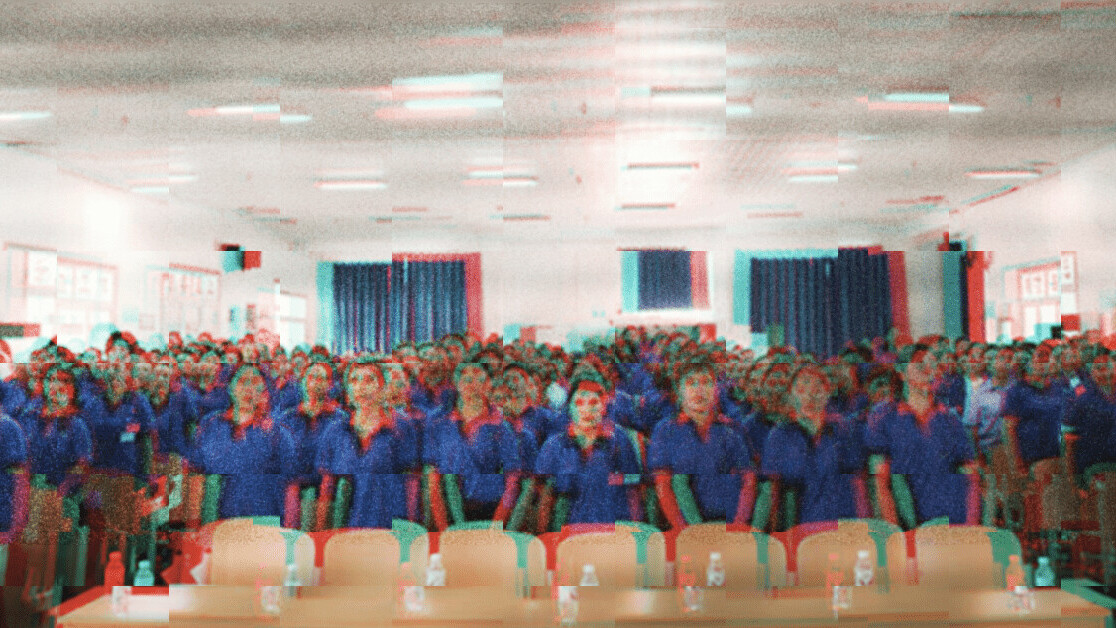
If you bought a gadget from a big company since 2017, there’s a strong chance parts of it were made in Chinese forced labor camps.
A new report from the Australian Strategic Policy Institute found that the Chinese government has “facilitated the mass transfer of Uyghur and other ethnic minority citizens” to factories across the country and forced them to work. These locations are in the supply chain of at least 83 companies — many of them technology behemoths.
The report states around 80,000 individuals were moved from the far west of Xinjiang to work in these forced labor camps. The majority of these people are Uyghurs, an ethnic minority in China that has undergone horrendous treatment.
They were transferred to the force labor camps between 2017 and 2019, as part of the Chinese government’s “re-education” policy. This effectively includes ideological training, constant surveillance, and religious oppression.
Specifically, the tech companies named in the report are:
- Apple
- Huawei
- Amazon
- Samsung
- Microsoft
- ASUS
- Sony
- Dell
- HTC
- OPPO
- Oculus
- Acer
- Nintendo
- Nokia
- Sharp
- Siemens
- Toshiba
- Xiaomi
- Vivo
- Panasonic
- Cisco
- Hitachi
- ZTE
- Lenovo
How forced labor was involved in the components used by each of these companies varied, but the report outlined a few examples. One of them was the transfer of 1,200 Uyghurs to an O-Film factory in 2017.
This company manufactured the front-facing cameras for the iPhone 8 and iPhone X. According to its website it also makes components for companies including Huawei, Lenovo, and Samsung.
What have the companies involved said?
Basically, a lot of nothing words jumbled together to the effect of: We are opposed to forced labor camps and will look into this matter
It’s what Microsoft told Vice, and it’s what Apple told the Washington Post. Is this method of responding a surprise? No, it’s straight out of the PR playbook: Don’t take responsibility and promise vague, positive action.
Thing is — this is hardly the first time a big tech company has been found using human rights-abusing factories. In fact, if you do a quick Google search looking for “sweatshops technology” you’ll find an incredible amount of forced labor camps in the industry; a trend going back years and years.
At this point, there’s really only one conclusion: Big tech companies don’t care.
Until they’re found out by investigations like this or from whistleblowers, they’re happy to use the cheapest labor available and keep their stockholders happy with increased profits.
Please, prove me wrong. I’m waiting.
What can be done about the forced labor camps?
Here we reach one of the biggest issues. Look again at that list of companies. If you’re going to partake in the modern world — which, for most of us, isn’t really an option — you’re going to encounter a product from one of those organizations. And, believe me, if these companies are involved in forced labor camps, expect unlisted businesses to be implicated too.
This means if you love gadgets you’re, morally, kinda fucked. Which, as a gadget-lover and reviewer, is depressing as hell.
This leads to a simple question: What can we actually do?
The report from the Australian Strategic Policy Institute has a long list of suggestions (scroll down to the “Recommendations” part of the report on the right hand sidebar), but these can be summarized to “put pressure on the Chinese government.” I have my doubts on how well that works.
We could also consider not buying some of these products, but due to the nature of late capitalism — that’s not really achievable. Yes, we can try and not buy as many pointless gadgets, but it’s tough to exist in the current world without, say, a smartphone or computer — let alone thrive.
Also, this argument buys into a PR technique companies use (especially when it comes to the climate crisis) to absolve themselves from responsibility. You know, it’s as though they’re saying “it’s you, the people, who need to change, we’re just giving you what you want.”
Which is all sorts of bullshit.
My belief is that forced labor (or “re-education) camps in the technology space need to be fought with regulation. The clearest way of achieving this is simply delivering huge fines to companies caught using these practices. Just see how long hardware makers continue to use sweatshops after they’re hit with a fine big enough to reverse the savings they made at a human cost.
And if a fine doesn’t work? Put some of the company’s executives in prison.
Is there another way?
One option is to concentrate on making devices less disposable. The idea being, if you can reduce the yearly churn of new devices, you can ease the burden on factories and the need to create forced labor camps.
The EU in particular has been active when it comes to reducing the impact of the device cycle — although not specifically for the reasons of modern slavery.
One example is the organization looking into forcing phone makers to include replaceable batteries in handsets. Another is its fight with Apple over standardizing cables. There’s not a huge leap from this to “right-to-repair” legislation, which would help reduce device churn.
And, because the EU is so large, Americans would likely benefit from these changes too — as it wouldn’t be cost-effective to make two completely different devices for the markets.
Would this automatically solve forced labor camps? Of course not, but it’s a step away from our current system that requires a never-ending manufacturing cycle.
Realistically, businesses are never going to stop using sweatshops because all they really care about is making money — no matter what their marketing materials will have you believe. But there is a real human cost to this.
Of course, as individuals we can be aware and make changes where we can. But never forget that it’s the companies themselves supporting and spreading this methodology. And the only way to stop this human abuse is to hit them in the only place they care about: Their bank accounts.
How? Fine companies who use sweatshops so hard, they never make the same mistake again, and put the executives responsible behind bars.
Get the TNW newsletter
Get the most important tech news in your inbox each week.




